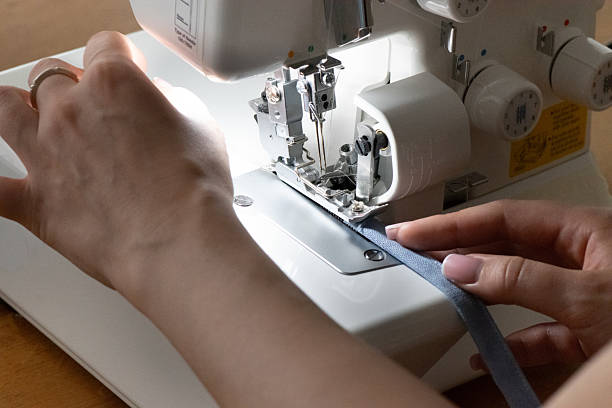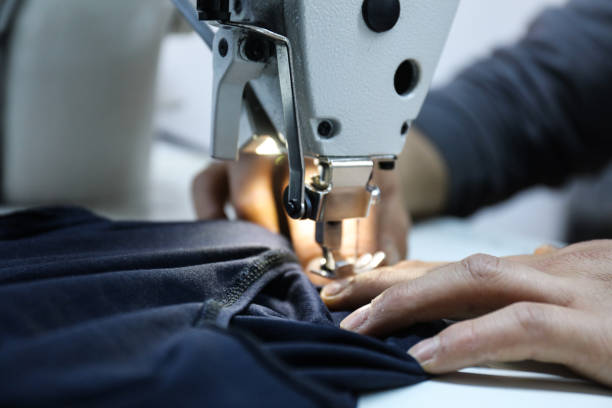Each day, we take technical rolls of fabric and turn them into yoga-lifestyle products that stretch, breathe and endure with the athlete. We get this question all the time—from our consumers who are in-the-know and from brand partners alike: what is it really going to take to sew stretch material right?
Sewing stretch fabric is not only a craft but also science. What separates a lasting pair of yoga pants from one that pills, sags, or blows its seams out after only a few $10.
This guide walks you through the professional principles of working with stretch knits to get a beautiful commercial-grade finish, whether that’s for your next collection as a brand or quality garments sewn at home.
Why Stretch Fabric is the Heart of Yoga Apparel
And finally, yoga is all about moving freely with sweat-wicking and compression spread over the body. The great deception inherent in stretch fabrics—usually some kind of nylon/Lycra, polyester/spandex or other proprietary blend—is that they achieve this fabric without having a bias. Not only are knits stretchy, they also have a similar return stretch to woven fabrics do and move with the body.
The biggest challenge to sewing with them is creating seams that stretch the same way as the fabric. A traditional straight stitch will pop immediately upon a stretch. So the ambition is to choose stitches and techniques that allow a seam just enough stretch AND recovery without breaking or popping.
Part 1: The Professional Toolkit
The biggest cause of amateurish results is using the wrong tools. This is what we use on our production lines, and so it should give you a premium result:
Right Machine Needle: Ballpoint or Stretch.
- Universal Needles perforate and cut the knit fibers, resulting in runs and skipped stitches.
- Ballpoint/Jersey Needles are more rounded tipped needles that will push aside rather than pierce through the fibers of a knit. Ideal for standard jerseys.
- Stretch Needles have a longer scarf, an indentation above the eye to help prevent skipped stitches in very stretchy fabrics like yoga wear made of spandex blends. This is what we use for MOST performance fabrics.
Right Thread: High-Quality Polyester
When washed, the lack of stretch in cotton thread causes it to deteriorate and break. It has a little bit of natural stretch, which is just about right, and which puts polyester thread on top. We also use a textured polyester woolly nylon in the loopers of our sergers for seams that are both strong and flexible, which is important if you don’t want them to snap open with everyday wear.
Specialized Presser Feet
Walking foot-This is absolutely life changing. It has a separate set of feed dogs that grab the top layer of fabric and pulls is in perfect sync with the bottom layer being moved from underneath by your sewing machine’s own feeding teeth. Both help prevent stretching in the seam and ensure that your layers stay aligned, even when sewing a waistband or gusset.
Dual Feed System: In more advanced machines, there is also something called the dual feed system that serves as a built-in walking foot.
Part 2: Stitches That Can Take Stretch
Now this is where top-notch construction comes in. The stitch needs to be equal in flex and give to that fabric.

Home Machines and Professional Finish
- Wide Zigzag Stitch: The most basic stretch stitch. Narrow Zigzag Stitch: More versatile than the one above, but a little bit lengthy to sew on straight lines when fixing knit fabrics, which ends up rising upwards due to heat pressing or after its first wash. Choose the medium short length (2.0–2.5 mm) and a narrow width( 0.5-1.5mm). This lets the seam stretch before it breaks.
- Lightning Bolt Stitch: a stretch and recovery specialty stitch that can be found on most new machines.
- Double (Twin) Needle: Creates two rows of straight stitches in parallel on the top and a narrow zigzag below. This is the trade secret for clean hems, necklines, and top stitching that keeps all stretch. It mimics the signature topstitching seen on ready-to-wear apparel.
Industrial Manufacturing:
- Overlocker (Serger): The 3, 4, or 5 thread machine that forms the cornerstone of apparel manufacturing. It sews the seam, trims the fabric edge, and overlooks the raw edge all in one pass. It creates incredibly durable and flexible seams for the stress points in yoga clothing.
- Coverstitch Machine: This is what produces the neat, flat seams with 2-3 rows of stitches on top and looper thread underneath. Stretches a ton with very little recovery.
Part 3: The Manufacturing Workflow for Stretch Sportwears
Fabric Preparation & Cutting
Pre-Washing: ALL fabric must be washed and dried to remove manufacturing finishes and allow for shrinkage before cutting. This step will also be skipped if you go directly to mode adaptation, ending with ill-suited final products.
Precision Cut: All cuts are done on our computerized cutting machines for 100% accuracy. At home-use sharp scissors, a rotary cutter, and pattern weights instead of pins to prevent pulling on the grain.
Sewing Technique: Guiding, Not Pulling
Allow the feed dogs of your machine and walking foot to do their job. Imperative- Hands will only have to ease out or gently direct the fabric in a manner such that the seam line stays straight and not stretched. One of the most common things that leads to wonky, bulging seams is pulling your fabric as you sew.

Pressing for a Polished Look
Always press your pieces —not iron, the stitch won’t stick without it, and it gives shape to a garment. Steam iron in a low to medium setting, suitable for the fabric. At all times, press after you have sewn — first to “set” the stitches, and then again to lay them down flat.
Common Quality Issues and How We Solve Them
- Problem: Skipped Stitches.
- Cause & Solution: Almost always a needle issue. Use a new, sharp Stretch needle. The fabric is not being properly penetrated.
- Problem: Wavy or Puckered Seams.
- Cause & Solution: The fabric was stretched during sewing. Use a walking foot, reduce presser foot pressure, and practice guiding the fabric without pulling.
- Problem: Seams Pop Under Stress.
- Cause & Solution: Using a straight stitch or a zigzag with insufficient width/length. Switch to a dedicated stretch stitch or use a serger. Ensure your stitch length is not too short.
- Problem: Hems Lack Stretch.
- Cause & Solution: Using a single-thread straight stitch for hemming. Switch to a double needle or a coverstitch for hems that are both flat and flexible.
Conclusion
Sewing stretch fabric correctly is what distinguishes activewear from technically sound and made for performance-driven yoga wear. It is a process that requires knowledge from the bottom to the top of all general rules used with this type of material.These principles are woven into every stitch at Ugawear. Our apparel is not just sewn, but engineered for performance. As a brand in need of the perfect manufacturing partner with invaluable knowledge on stretch fabric, contact Ugawear to talk about how we can help you.

